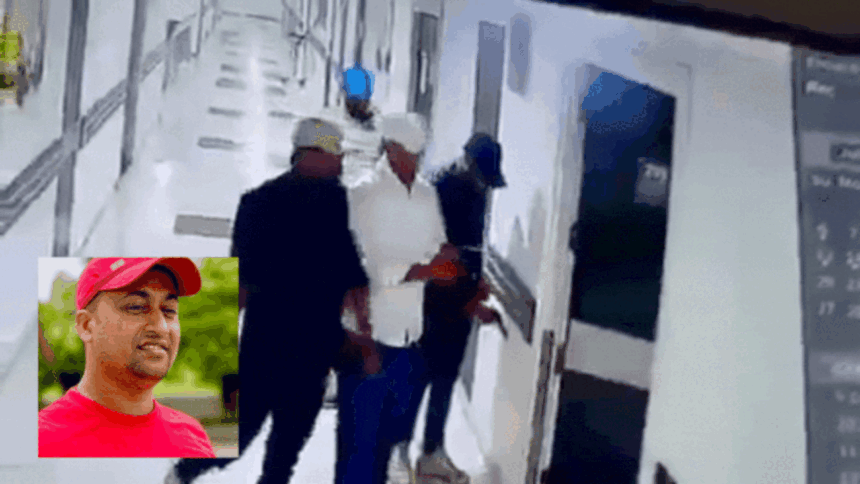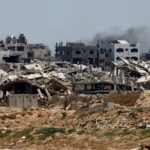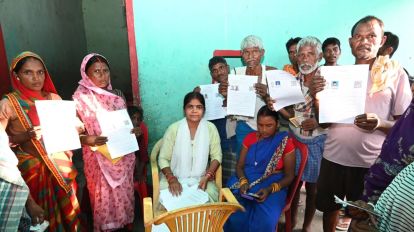Anatomy of a Crime – The Chandan Mishra Murder Case Begins to Unfold
The brazen daylight murder of Chandan Mishra at a reputed hospital in Patna jolted not just the medical fraternity but also the wider public across Bihar and neighboring states. It wasn’t just the brutality of the killing that shocked people—it was the location, a hospital, traditionally viewed as a sanctum of care and recovery, that underscored the audacity of the perpetrators. As investigations progressed and threads unraveled, it became clear that this was no ordinary crime. The calculated nature of the attack, the precision in planning, and the swift escape of the assailants suggested a deeper, possibly organized criminal backdrop.
Chandan Mishra, a mid-level hospital administrator known for his rigid compliance with rules, had reportedly become a thorn in the side of certain vested interests. Internal sources within the hospital, who requested anonymity due to fear of reprisal, hinted at disputes regarding contract labor, billing irregularities, and drug procurement chains. Mishra had allegedly begun submitting reports to higher authorities, potentially exposing financial malpractices. These initial leads began forming the backdrop against which the murder was understood.
The shooting took place inside the administrative wing of the hospital. According to eyewitnesses, two men in plain clothing entered the wing posing as visiting relatives. What followed was swift and methodical: Mishra was shot at point-blank range with a silencer-fitted pistol. The killers reportedly walked out with minimal panic, boarded a bike waiting near the hospital parking lot, and vanished before security personnel could react.
Police response, initially sluggish due to jurisdictional confusion, picked up pace following mounting public and media pressure. Bihar’s Director General of Police (DGP) formed a special investigation team (SIT) that began examining CCTV footage, employee attendance logs, and visitor entries from that day. The team found discrepancies in gate logs, indicating probable internal collusion. The role of certain hospital staffers soon became part of the probe.
While Patna police worked to uncover motives and track phone records, intelligence inputs suggested that the suspects had moved eastward. This triggered the involvement of West Bengal’s crime branch, leading to a joint operation. Days of surveillance, aided by technological tracing, eventually led the authorities to a rented apartment in New Town, Kolkata—a satellite township known for its modern infrastructure and, in this case, a convenient hideout.
The arrests in Kolkata marked a pivotal breakthrough in the case. Acting on digital evidence and intercepted conversations, a joint team of Bihar and Bengal police raided the premises and apprehended five individuals, all reportedly linked to criminal gangs operating in the border regions of Bihar and Jharkhand. The operation, carried out in the early hours to avoid public panic, went without resistance—perhaps a sign that the accused had not expected law enforcement to catch up so swiftly.
Police recovered multiple mobile phones, a laptop, forged identity documents, and a pistol believed to be one of the weapons used in the murder. The arrested men were immediately flown back to Patna on a transit remand. Interrogation began within hours of their arrival, and early leaks from police insiders suggested that the suspects had confessed to being hired assassins. The identity of the person or group that contracted the hit, however, remained under wraps—perhaps to avoid alerting others involved.
For Bihar’s law enforcement, the case quickly became a matter of prestige. It wasn’t just about solving a high-profile murder but about demonstrating that the state could execute cross-border operations and work in tandem with other states to apprehend fugitives. Statements from senior officials stressed coordination, modern surveillance techniques, and interstate intelligence sharing as key success factors.
Back in Patna, public sentiment remained tense. Protests erupted outside the hospital, with local unions and patient advocacy groups demanding better security protocols. The hospital, under scrutiny for lax internal checks, promised reforms. Meanwhile, political parties began leveraging the issue—some alleging complete lawlessness in Bihar, others accusing rivals of shielding the real masterminds.
As more information continues to emerge from the interrogation of the five accused, a clearer picture is expected to unfold—one that could expose not only the criminal actors but also systemic weaknesses in hospital management, law enforcement, and the nexus of crime and corruption in the health sector.
As news of the arrests made in Kolkata’s New Town spread across regional and national media, focus rapidly shifted to the identities of the five accused apprehended in the joint Bihar–West Bengal operation. Who were these men? What connected them to the killing of Chandan Mishra? And more importantly, who had orchestrated the plot behind the scenes?
Preliminary identification revealed that all five individuals—aged between 26 and 38—hailed from different parts of Bihar and Jharkhand but had prior associations with one another through various illicit activities. While none of them had a high-profile criminal record that might have flagged immediate suspicion, local police stations in Aurangabad, Dhanbad, Gaya, and Nawada confirmed their involvement in petty crimes, extortion rackets, and at least one pending firearms charge.
According to officials in the Special Investigation Team (SIT), the accused were part of a loosely organized criminal module that specialized in “contract enforcement”—a euphemism for carrying out intimidation, assault, or even murder for hire, primarily involving real estate disputes, business enmities, or political vendettas. In the last two years, intelligence units had flagged this rising breed of decentralized contract killers: men who maintained low profiles and operated across state borders to avoid detection.
One of the five, identified as Ankit Sinha, had worked as a security guard in private firms before allegedly drifting into crime. His familiarity with surveillance systems, according to sources, had helped the group disable or avoid key CCTV angles during their movement in and out of the hospital. Another, Subodh Yadav, was said to have a background in electrical repair—a skill that investigators now believe may have been used to jam or bypass certain entry-point alarms at the Patna facility.
Their New Town hideout—a two-bedroom rented flat on the top floor of a nondescript building—was leased using forged documents under a fictitious name. Neighbors described them as “quiet” and “rarely seen during the day,” fueling suspicions that they were following a low-profile playbook designed to evade detection. A laptop recovered from the premises was found to have an encrypted folder, which cybercrime specialists are still trying to decode.
What became increasingly evident was that the murder had not been a spontaneous act of rage. It was a well-planned, premeditated execution, likely carried out for a financial contract. Forensics matched the bullets recovered from Chandan Mishra’s body with a pistol found at the New Town residence, confirming direct physical evidence linking the suspects to the crime. Additionally, a voice sample analysis, taken from intercepted calls during the group’s stay in Kolkata, is underway to strengthen the prosecution’s digital evidence base.
But perhaps most revealing were the handwritten notes found inside a diary in the apartment. Though written in coded shorthand, the notes appeared to list initials, bank transaction figures, and multiple addresses. These are now at the center of a second-level investigation—one that aims to uncover who ordered the hit and how payments were routed. Officials suspect an intermediary—possibly a middleman or fixer known to both the hospital ecosystem and underworld operatives—played the role of bridge between the mastermind and the executioners.
Back in Patna, the interrogation of the accused was being conducted under tight security. A local court had granted extended custody to the SIT, given the seriousness of the crime and its implications for public safety. Sources from inside the police headquarters indicated that the arrested men had begun to “cooperate,” albeit partially. Two had reportedly admitted to being “paid to scare” Chandan Mishra, though they insisted the murder “was not the original plan.” This angle, if validated, would complicate the narrative—was Mishra shot because he resisted? Or was the original intent murder all along?
The hospital administration, meanwhile, remained under pressure. An internal audit had revealed glaring lapses in visitor verification, security protocol implementation, and administrative checks. At least three staff members, including a lower-rung admin officer and a security supervisor, were placed under suspension pending internal inquiries. Some officials are now calling for a third-party security overhaul and biometric-based access systems for all sensitive departments.
Politically, the case continued to gather momentum. Opposition leaders began accusing the ruling dispensation of failing to protect whistleblowers and allowing “criminal syndicates to thrive within medical institutions.” The ruling party, in response, pointed to the swift arrests and efficient coordination with West Bengal authorities as a sign of progress. Nonetheless, murmurs began circulating about whether larger fish—perhaps individuals with political or business clout—were being shielded.
In the court of public opinion, sympathy for Chandan Mishra surged. Described by his colleagues as an “upright, soft-spoken but uncompromising” man, Mishra had evidently drawn the ire of vested interests simply by doing his job. Local residents in his neighborhood held a candlelight march, demanding justice. His wife, who had stayed silent until then, spoke to reporters, pleading for full exposure of those behind the murder. “The men who shot him were just weapons,” she said. “The real killer is the one who gave the order.”
With more evidence being collected and the accused now in custody, the trajectory of the case promises to become more explosive in the coming weeks. For now, law enforcement remains tight-lipped about the next steps, but one thing is clear: the Chandan Mishra case is no longer just a hospital murder—it has become a test case for how justice is pursued in a system where crime and institutional weakness often collide.
As the investigation into the murder of Chandan Mishra intensified, the public focus turned sharply toward the hospital itself and the government institutions charged with protecting civil servants and whistleblowers. For many, Mishra’s killing inside a government-run hospital wasn’t just a tragedy—it was an indictment of a deeply flawed system that left an honest official vulnerable to organized crime.
The hospital where Mishra worked—a state-run tertiary care center in Patna—was no stranger to controversy. Over the years, it had faced scrutiny for irregularities in procurement contracts, supply chain bottlenecks, misappropriation of funds, and questionable hiring practices. According to whistleblower documents later leaked to the media, Mishra had been compiling reports on a range of alleged scams involving ghost vendors, duplicate billing, and equipment over-invoicing. One such report, it emerged, had been submitted just three weeks before his murder.
The internal security at the hospital—meant to be manned 24×7 and guided by CCTV monitoring—was exposed as being disorganized and porous. Entry and exit logs were maintained manually, visitor IDs were inconsistently checked, and surveillance footage was either missing or of such poor quality that it was of little investigative use. A team of forensic auditors dispatched by the Bihar government later confirmed that at least seven CCTV cameras had been non-functional in Mishra’s department for over two months. Requests for maintenance had allegedly gone unanswered.
This operational negligence added fuel to public anger. Civil society groups in Patna organized sit-ins, demanding reforms in hospital safety and a fast-track trial. Student unions across Bihar’s university campuses adopted Mishra’s case as a symbol of broader systemic decay, pointing out that if a senior government officer could be killed in a state facility, then no one—especially those who stand against corruption—was safe.
Meanwhile, political responses remained fragmented. The ruling party touted the swift coordination with West Bengal police and the arrests in New Town as proof of its commitment to law and order. But critics, both inside and outside the legislature, pointed to a deeper issue: why had an official known to be working on sensitive audits not been provided institutional protection? Why had his complaints not triggered high-level reviews? And why were state-run hospitals turning into battlegrounds for financial control and muscle power?
What also came under scrutiny was the state’s mechanism for whistleblower protection—or rather, the absence of one. While Bihar had theoretically adopted the Whistle Blowers Protection Act, its enforcement was minimal. Officers like Mishra often found themselves isolated, unsupported, and vulnerable once they raised red flags. A Right to Information (RTI) query filed by an activist revealed that no officer in Bihar had been granted formal whistleblower protection in the past three years, despite numerous reported cases of harassment and threats.
Adding another dimension to the outrage were the statements made by hospital staff. Several junior employees told local media that Mishra had been under immense pressure for weeks before the murder. He had allegedly spoken to a senior colleague about receiving veiled threats through intermediaries. One staff nurse, speaking anonymously, said she had overheard Mishra say that “a file I touched has upset people who can ruin lives.” These testimonies—while not formal evidence—painted a picture of a man battling institutional inertia, political interference, and an underworld nexus largely alone.
In response, the state health department announced an internal probe into all audit reports submitted by Mishra over the past year. A high-powered committee was constituted, comprising officials from the Anti-Corruption Bureau, state health services, and the Chief Secretary’s office. The Chief Minister, under pressure from the opposition and growing public fury, promised “sweeping reforms” and declared that “no one, no matter how powerful, will be spared.”
But public trust remained shaken. For many citizens, especially government employees and those in regulatory positions, the murder was a chilling reminder of the cost of integrity. Editorials in regional newspapers drew parallels with past incidents—doctors attacked for reporting malpractice, bureaucrats threatened for stopping shady tenders, and now, an officer murdered for auditing financial irregularities. One front-page headline bluntly asked: “Do our systems punish the corrupt—or protect them?”
Outside the hospital, the symbolic war for justice had begun. Posters of Chandan Mishra appeared on walls near the administrative blocks of multiple government offices. Social media campaigns under hashtags like #JusticeForChandan and #WhistleblowerLivesMatter gained momentum. Petitions were filed in the High Court seeking a judicial inquiry, while prominent civil rights groups demanded that the Central Bureau of Investigation (CBI) take over the case.
Within the SIT, investigators began working through a widening list of persons of interest. The arrested shooters had begun naming potential contacts—middlemen, financiers, and possibly hospital-linked intermediaries who might have facilitated access and logistics. Call records, financial transactions, and surveillance camera trails across Patna and Kolkata were being re-examined for patterns.
For now, the case remained officially within the jurisdiction of the Bihar police. But murmurs grew louder that the state machinery might not be able to investigate itself without conflict of interest. Several media houses began independent investigations, digging into the financial records of contractors associated with the hospital, as well as political donations made by construction and supply firms to local parties. These reports hinted at a larger ecosystem—where public procurement, political patronage, and criminal enforcement overlapped.
In many ways, the murder of Chandan Mishra had grown beyond the boundaries of a single crime. It had sparked a state-wide reckoning. What began as a targeted killing now threatened to expose the fault lines of public health governance, political complicity, and the dangers faced by those trying to uphold accountability from within the system.
Also Read : Hansika Motwani & Sohael Khaturiya Headed for Divorce? Trouble Brews Just 2 Years After Fairytale Wedding








